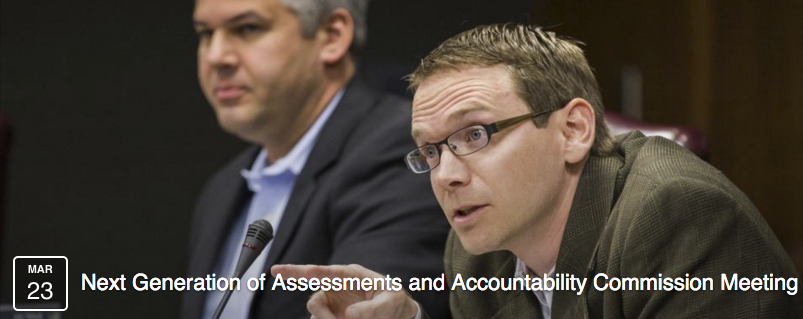The Truth About School Failure
by A. Patrick Huff, Ph.D.
“All the forces in the world are not so powerful as an idea whose time has come.”
Victor Hugo
Walking into Unfortunate Elementary school you are immediately struck by the friendliness and comfortable atmosphere in the building. From the receptionist, to the secretary behind the desk in the back of the front office, to the older students taking out the flag to be displayed on the flagpole, it is a congenial school. Parents dropping off their children have smiles on their faces. Students, who eagerly come into the school to meet with their classmates for the start of another day at school, appear eager to start a new day of school. By all appearances, this looks like a great school. The principal is outgoing and conveys strength with compassion. The assistant principal is as she should be, taking care of business, being the support for the leadership in the school. The teachers are in place ready to begin the day and teach the children to the best of their ability. This is a clean school. The building is new, having been redesigned from its older structure. The playground equipment is updated and full of the things that young children love to play on. If my kids were young again and we lived in this neighborhood, I would have no problem with them attending this elementary school.
Yet, this school may not exist a year from now. This school has a demographic that is socioeconomically low, bilingual and about to enter stage four of the School Improvement Program. You see, this school is in a community that is 91 percent Hispanic. The percentage of students on free and reduced lunch is 64%. The English language difficulties are ever present as you hear the parents when they drop off their kids. If this happens after this year’s administration of the STAAR test it will mean a change in leadership and most, if not the entire faculty, will be fired. The students will come back to the same building in the fall, but none of the faculty and staff that they knew from the past will be there.
This is life in this accountability madness that all schools live in. You see, Unfortunate Elementary School (not its real name) is labeled by The Texas Education Agency (TEA) as “Improvement Required”. In the eyes of the State of Texas, the teachers are not doing their job and the principal has failed her faculty and the community she serves. Could this be possible? This is not what I observed when I visited the school on four different occasions. I’m sure it’s not what the parents feel about the school their children attend. This is the reality, however, when a school is measured by the state accountability system. It’s all about the data, and the data at Unfortunate Elementary is deemed lacking in the eyes of the state.
I will refer you to another article I wrote for Voices Empower titled School Accountability Madness to fully understand the mechanics of school failure and how the rules were applied in the old federal system. The key to understanding the new system lies in understanding the old system. The blueprint is still applicable. It is safe to say that to the uninformed, public school failure is quite deferent than what the state qualifies as school failure. What is important to understand for the parent who is trying to figure out just why the state is coming into their child’s school to shut it down, is school failure is not linked to true academic weakness. School failure is linked to failure to reach required percentages of passage of the state test. Fix this firmly in your mind. Again, school failure is not about the student failing to learn, or the school failing to educate the child. It is about the school being unable to reach the required percentage of students passing the state test. So, the question is asked, “isn’t this kind of the same thing”? Definitely, it is not.
Now let’s get into what is truly happening in the schools that are labeled as failing. At the elementary school I use as an example for this article, the community dynamics are key to understanding why schools fail. Keeping in mind that they are not really failing. They are only failing in the mind of the state; the same state that is allowed to set the parameters for what constitutes failing. Another logical question is asked, “should not the state, which oversees public education, be allowed to set the parameters for what constitutes passing and failing of a school or school district it has jurisdiction over?” You would think so, if the state had the best interest of all the children at heart when it passes its legislation dealing with school assessment and accountability. What if, though, the state was involved with other outside entities that did not have the best interest of all the children of the state in mind when it comes to public education matters? If this statement were true, then one would have to question the whole program of assessment and accountability. So, please bear with me as I layout the case for the state advocating and promoting, through its policies, a system that is highly discriminatory against schools located in community areas of poverty. Yes, you read correctly. The Texas Education Agency, which follows the policies legislated by the Congress of Texas, is discriminating against certain schools by unjustly sanctioning them to the point of closure, so that that schools cease to exist as a school that represents the community it serves.
Unfortunate Elementary has a population that is 91% Hispanic. They have a student population where 64% qualify for free or reduced lunch. That means the community is 64% economically disadvantaged. Seventy-Two percent of the students qualify as English Language Learners. That means that 72% of the students have varying degrees of difficulty with the English language because they speak Spanish as their native tongue. The final demographic this school has working against it is that 28% of their student population is labeled “mobile”. This means every year the school loses 28% of their population because the family decides to move. It also means that 28% of the student population moves into the school every year from some different location. Where that location is varies, of course, and the degree of how well they have been educated varies too. So, every year Unfortunate Elementary has to start over, or at least try to catch up, a large percentage of their students because they just moved into the school’s attendance zone and their language skills may be very lacking or non-existent. These mobile students can also move in or move out in the middle of the school year, which complicates the issue even more. With all these challenges 53% of the students passed the test in 2014-2015. This may be cause for celebration, with all the challenges that the school faces every day of the week. Unfortunate for Unfortunate Elementary, the target mandate set by the state is 60%, so Unfortunate Elementary is shamed with a label of “Improvement Required”. This label system, if the state has its way, will change in 2017 when letter grades will be given as an accountability rating. So, Unfortunate Elementary will have a grade of D or most likely, an F to display for all to see. That is, if Unfortunate Elementary even exists in 2017 (TEA 2016, 2014-2015 school report cards).
Now imagine working as a teacher or administrator in this school. You love your students. That’s why you got into the profession to begin with. You want to do right by your students and provide them with a quality education to take to the middle school, then later to high school and on to work or college. Now the state, which oversees your job, tells you that in order to qualify in their eyes as a good teacher you have to get your students to pass the state test. This state test is a one size fits all test that doesn’t take into account what the family dynamics are, it doesn’t take into account that the income of the family is below the poverty line, with all the variables that go along with living in a family and community of poverty. It doesn’t take into account that you are struggling to learn the English language. It doesn’t take into account that you may have come from another part of the U.S.A., or that you may have come from a different country. No, the test is administered with none of this in mind. The state says, “Here it is kid, do the best you can, and oh by the way, if a certain percentage of you don’t pass the test, we’re going to sanction your school. On top of that, we’re going to raise the percentage of how many students need to pass the test at your school next year, just for good measure. You’re not going to pass this year, and we’re going to make it even more difficult for you to pass next year. Don’t like that? Too bad! That’s the way it is, because we’re the state and we call the shots. For good measure, if you continue to fail to meet the percentages we set, you’re going to be shut down and we’ll turn you into a charter school. We’re not going to tell you that a charter school doesn’t guarantee success or any better of an education. And we’re also not going to tell you that your parents will not have any voice in how this school is run. You see as a charter, the school administration is hired by the charter and answers to the charter management organization that owns the charter. Oh, your parents will still pay their school taxes, but they just don’t count as a stakeholder. Do you understand?”
Now, let’s take a look at another school in the same school district that Unfortunate is located. We’ll call this school Lucky Elementary School. Lucky is located on the other side of the tracks. Lucky Elementary’ s demographics break down as:
African American – 0.9%
Hispanic – 8.0%
White – 60.4%
Asian – 26.4%
Eco. Disadvantaged – 2.7%
English Language Learners – 16.9%
Mobility Rage – 4.6%
Lucky Elementary had a 96% passing rate on the state test last year. They will not be shamed or receive any sanctions from the state. Why? Is it because the teachers at Lucky Elementary did such an amazing job of teaching? Is it because the principal is such an innovative and inspirational leader? Granted, Lucky Elementary does have good teachers and the principal just might be an innovative and inspirational leader. That, however, is not why they will be receiving no sanctions and will not be shamed in the eyes of the public. Lucky Elementary will receive praise because it is lucky enough to be located in an affluent area that does not deal with the challenges of mobility, lack of understanding the English Language, or the ravages of poverty that Unfortunate Elementary has to deal with every single day (TEA, 2016).
The new state accountability system is mainly comprised of four indexes that determine if the school’s students are performing well. That translates to performing well on the state test. In 2017-2018 there will be a fifth index that judges the community involvement in the school. For now we will just deal with the four indexes that are labeled as:
Student Achievement
Student Progress
Closing the Achievement Gaps
Post-Secondary Readiness
Each index has a target percentage that must be met. In the case of Index One, the target percentage is 60%. That means that 60% of the school’s population has to pass the test. Please understand, 60% is not the passing percentage for the student. No, that percentage is much lower. The percentage for the individual student to pass varies by grade and subject. Just a few examples:
3rd Grade Reading – 55%
5th Grade Reading – 59%
9th Grade English One EOC – 57%
10th Grade English Two EOC – 59%
3rd Grade Math – 52%
5th Grade Math – 48%
9th Grade Algebra EOC – 41% (lead4ward.com)
These percentages may shock the uninitiated in school reform issues. They reveal an uncomfortable truth about the school reform agenda in its progress toward one great education system for all. We have been in this agenda of “school reform” since the early 90’s. Every new president speaks of improvements to the education systems of America. Today’s presidential candidates are no different. Yet, if the agenda was moving us closer to the goals of a great system, wouldn’t we be closer to a truly strong percentage that truly reflects master and understanding? The truth of why these percentages have to be as low as they are is because of the conditions many of the schools work in on a daily basis. Also, it is due to the large learning gaps that are present in the communities of poverty and high mobility rates like that of Unfortunate Elementary. So, with the percentages at these levels, there will be huge numbers of schools that will fail to meet standards for accountability this school year. Guess what happens next school year? Yes, that’s right, the percentages required for the student to pass will go up. If you click the link provided titled “lead4ward.com” the light blue percentages are for the year 2015-2016. The light tan column shows the percentages required for 2016-2017. The dark blue column indicates the percentages required for 2017-2018. School administrators are scared to death of these percentages. Many are scratching their heads wondering how these percentages are going to be reached in their particular demographic. The other percentages going up are the targets for each index. This is the new Adequate Yearly Progress or AYP. Heretofore, AYP was a federal accountability agenda. It was used to drive schools to failure under the old accountability system administered at the federal level. It drove schools and school districts to failure by requiring subgroups or demographic groups to reach percentages of passing the test. As the percentages became higher each year, more and more schools failed to meet the percentages. This was due to the social, economic, and poverty conditions working within the community where the school resided. I can’t show you an example of the individual school report card without revealing a school’s name and violating their privacy, although these are public documents. If you live in Texas and want to see your school’s report card go the Texas Education Agency website and type into the search engine, “2014-2015 school report cards”. Then click the first link, “2014-2015 school report cards”. When you get to the site click “Campus Name”. Don’t put elementary or middle school or high school. Just put the schools name into the search engine. A few options may pop up. Just pick the one that applies to your school, and go to the bottom to “view report”. The report card should come up. It will show you the four indices and how your school’s students performed. Now, if your school did well and your indexes exceeded the target line significantly, please avoid the temptation to puff out your chest and think that your school is all that. You just happen to be in a lucky school. Use the same formula and go to a school in your district that you suspect may be having difficulty. Compare the indices of their school with yours. This school might just be an unfortunate school. Let this sink in for a minute.
Back now to the federal AYP agenda. As the failure rates went off the chart in 2010-2012 states were led to accept President Obama’s waiver option in 2012-2013. The waiver relieved states of the 2014 mandate to be 100% proficient on the state test. No Child Left Behind established this ridiculous mandate and put it into law. Why didn’t the education profession and parents see this for what it was way back in 2003 and 2004? Our failure to recognize what was happening proved devastating to everyone in the public school system. The 100% proficiency mandate was a trap, pure and simple. It drove states to adopt President Obama’s waiver to escape the inevitable failure and loss of sovereignty over its school systems. Along with the waiver came Obama’s mandate of his own. This resulted in Common Core and teachers and principals being evaluated according to how their students performed on the test, which in turn led to more and more teachers teaching to the test. Once again, if you need a refresher on this, please read School Accountability Madness or if you want the whole picture read my book, The Takeover of Public Education in America: The Agenda to Control Information and Knowledge Through the Accountability System. The last thing that Obama’s Waiver did was require every state education agency to submit their own plan for school assessment and accountability. If the state’s plan was accepted, the state got the waiver. The unseen element in this whole scheme is that along with acceptance of the waiver, the state education agency became a sub-set of the federal Department of Education; a mini-U.S. Department Of Education. Because Texas’ waiver application, written under the oversight of then Education Commissioner Michael Williams, was accepted, Texas is under the waiver and is a mini-USDOE.
Despite the politicians proudly proclaiming that we are free from federal oversight and we are free to pursue our own agenda for assessment and accountability, nothing could be further from the truth. Texas is currently under a review process for a new assessment and accountability system. It is called Next Generation of Assessment and Accountability. Governor Abbott has appointed a commission, with the oversight of Senator Larry Taylor and Representative Jimmie Don Aycock, to gather information from education and business experts about the different initiatives included in the bill that lays out Next Generation Assessment and Accountability. The Commission is also allowing for public testimony. The member of the public is allotted three minutes to speak to the Commission about their opinions of these deliberations and whether they are for or against the new bill. I have read the bill. You can read it too. Go to; http://tea.texas.gov/2804Commission.aspx and read about the role of the Commission, the agenda and the meeting dates. You can also read the bill, House Bill 2804. House Bill 2804 calls for continued high stakes testing and continued accountability for the schools and school districts. It lays out how the percentages that will gradually raise the passing percentages in the new AYP under our mini-federal USDOE. It also calls for schools to be graded A-F in a new shaming of the schools and school districts. It calls for Texas to be in the top 10 states in the country for quality of school systems by 2019-2020. It calls for there to be no significant achievement gaps by 2019-2020. It also calls for the Next Generation Standards. These new standards will replace STAAR currently in use. Next Generation will be aligned with the Common Core Standards. They won’t call it Common Core, but it will be Common Core. Do they really think we are that stupid? Yes, they do. Remember the 2014 100% mandate. We did not raise our voice against this. The powers that control the education reform agenda are banking on us not being awake and falling for the scheme again.
This is why I am calling for as many of you who can to meet up with us at the State Capitol this March 23rd to stand in protest against the Commission on Next Generation Assessment and Accountability when it meets to once again allow for expert and public testimony. Do I think the Commission is a dog and pony show? Most definitely, I do. The bill is already written. The only way it is going to be scraped or significantly amended, is for enough of us to show up in unison and speak with one voice. We must say “no” to the accountability system and to the phony standards that go along with it. We must say “no” to federal control that continues to stand as overlord to our children’s education. We must say “no” to the corporate elitist businesses that profit on the backs of our children. We must say “no” to the lobbyist who line their pockets with the money corporations give them to do their bidding. We must say “no” to the politicians who continue to push this horrid system that discriminates with heavy sanctions schools like Unfortunate Elementary and praises schools like Lucky Elementary. Only when we stand up and say “NO” will we truly get back local control for our school boards and school systems. Politicians pay attention to two things: money and high numbers of their constituents.
Please join us on March 23rd. Go to the webpage made available by Alice Linahan and indicate that you will stand with us against those who wish to steal the future of our children. You can find your opportunity to attend at Alice Linahan’s Invitation to Join. This Facebook page will provide more information, as we get closer to the date. Thank you, Alice, for your tireless work to help keep us all informed as to the importance of paying attention to the education reform agenda.
I hope to see you in Austin at the State Capitol on March 23rd. If you can’t make it, show your solidarity by liking the Facebook page.
A. Patrick Huff, Ph.D.
aphuff51@gmail.com













